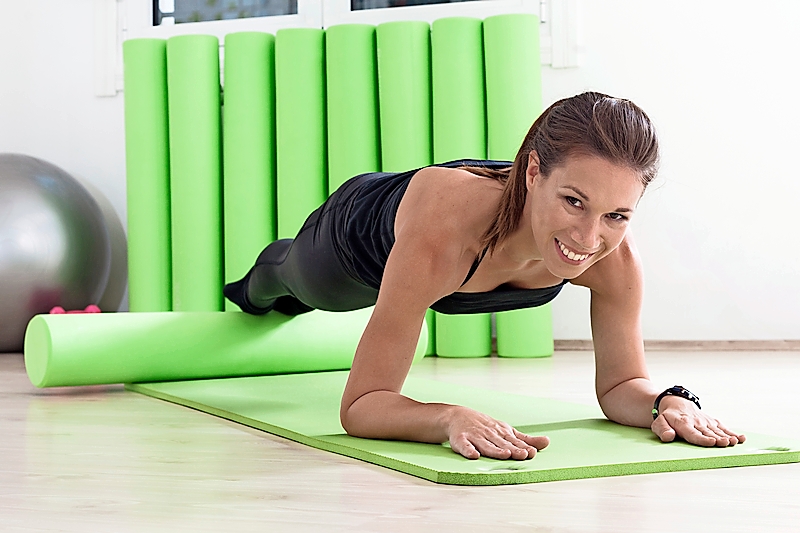Foam Rolling—Roll Your Way to Fitness
By Mary Kay Kleist
August 2015 View more Health & Fitness
 It’s a fitness trend that’s growing in popularity. It’s called foam rolling. You can find the dense foam cylinders at the gym, at the physical therapist’s office, the running store, and in your living room. Some call it the cure-all for many aches and pains. Think of it as an iron to smooth and lengthen your muscles.
It’s a fitness trend that’s growing in popularity. It’s called foam rolling. You can find the dense foam cylinders at the gym, at the physical therapist’s office, the running store, and in your living room. Some call it the cure-all for many aches and pains. Think of it as an iron to smooth and lengthen your muscles.
Muscle Massage
Foam rolling is a form of self-myofascial release (SMR). It works like a self-massage, focusing on your muscles and connective tissue. It can relieve muscle tension and increased blood flow to muscle tissue. “When muscles are stressed, their range of motion is restricted. Muscle restriction can lead to dysfunction and poor performance which increases the risk of injury,” said Carol Teteak, fitness coordinator and personal trainer, Edward Health and Fitness Centers. “Foam rolling, along with a regular stretching routine, can help eliminate muscular stress and maintain flexibility and mobility. Additionally, foam rolling helps to increase circulation, improves muscle recovery and inhibits overactive muscles,” said Teteak. Professional massages can work wonders on your body, but foam rolling is an inexpensive way to provide an effective self-massage. It allows you to break-up the adhesions (knots) in the soft tissue, decreasing trigger points from forming. This brings fresh blood flow to the area, which brings nutrients and helps repair damaged muscle tissue.
Choosing The Right Roller
Foam rollers come in many shapes and sizes, densities, and colors. For beginners, it’s best to start with a roller that is less dense, without knobs or ridges. “Foam rollers vary in their density which determines how deep the massage is. Less dense, or softer foam rollers, are more forgiving and recommended for people who are more sensitive, where denser or harder foam rollers provide a more intense massage,” said Teteak.
Eliminating Excessive Stress
The demands of any sport can place excessive stress on the body. Foam rollers are popular for athletes who train several times a week. Fitness enthusiasts who focus on strength and cardiovascular training can stress muscles due to excessive repetitions and weight load. Add foam rolling to your routine, and this can help to keep muscles from tightening up.
Experts say aging adults can benefit too. “As we age, our muscle function deteriorates, which can produce adhesions that can cause restrictions in range of motion. Along with regular activity and exercise, foam rolling can help reduce these effects,” said Teteak.
Foam Rolling Method
There are several methods to foam rolling. The most effective method used is to identifly a tight, painful muscle area and slowly apply pressure at that point, or you can slowly roll along the muscle. Even though it might feel great to roll back and forth on a foam roller at a fast pace, experts say you are not actually eliminating any adhesions that way. Your brain needs enough time to tell your muscles to relax.
Doctors advise that you should never foam roll joints or injured tissue. If you’ve had recent surgery or a medical condition, consult your doctor before rolling. Foam rolling can make a great difference for someone who is in good health and works out regularly. If you can spend 10 to 15 minutes foam rolling and 10 to 15 minutes stretching your muscles every night before bed, experts say you’ll probably sleep better, feel better overall, and recover faster.


